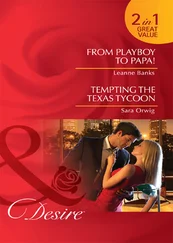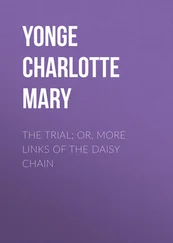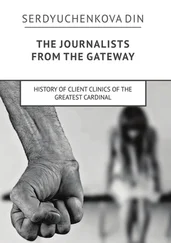Jury trial had come a long way since a desperate murderer called Alice had squealed on five of her co-accused at Westminster in 1220. Just how far was marked, in ways both geographic and historical, by the 1880 publication of Fyodor Dostoyevsky’s The Brothers Karamazov. Juries had been introduced to Russia fourteen years before and the novel concludes with the prosecution of Dmitri Karamazov for the murder of his father, in a courtroom that would have been familiar to readers from Paris to San Francisco. Tickets have been snapped up by luminaries from miles around, lorgnettes twinkle in the audience, and counsel joust across a table stacked with a bloodied silk dressing gown, a blood-stiffened handkerchief, a pistol, a pestle, and a slender pink ribbon. The spectacle, as compelling as it is mysterious, somehow implicates everyone present – and the shared shame is spelled out when Dmitri’s brother, Ivan, deliriously characterizes the spectators’ lust for bread and circuses as equal to any act of parricide.
Ivan Karamazov had very personal reasons for his distress, but it was shared by right-thinking folk everywhere. French commentators and English hacks rarely reported a trial without tut-tutting at the onlookers. If it was not the fact of their femininity, it might be their eagerness to applaud, their willingness to bring food to court, or their morbid curiosity – attacked, of course, in articles that went on to describe every twitch and tremor of the defendant.
The concerns all echoed those that had been expressed not so long before about public executions. But the bread and circuses of the courtroom constituted a very different diversion from the gallows spectacle. Sobs, applause, and whispers had replaced the howls of hatred. Packed lunches had taken the place of Tyburn’s gin-soaked procession. And although the verdict in a high-profile case could still bring traffic to a halt – gridlocking the entire West End of London in the case of one murder acquittal in 1907 – crowds now preferred queueing to rioting. A decision not to issue tickets might cause the lines to form long before sunrise, and the crown might over-flow far beyond the court itself, but spectators always knew their place. When Dr Hawley Harvey Crippen was arraigned for his wife’s murder in 1910 – at a trial which saw a shred of her skin passed around on a dish – a multitude of the ticketless swarmed outside the Old Bailey until police steered them into an empty court. Only after several hours of picnicking and chattering did they realize that they had been duped – at which point they drifted home.
The jury trial had further to travel, but by the turn of the twentieth century it had come of age. Born from magical rituals and only tempered by reason, it had always enacted the difference between right and wrong as much as it had decided it. And with the end of public executions, it had become the only judicial show in town: a touch of evil for an era that no longer thought it seemly for crowds to jump at the legs of a dying man.
I have to fight against countless subtleties in which the Court is likely to lose itself. And in the end, out of nothing at all, an enormous fabric of guilt will be conjured up.
FRANZ KAFKA, The Trial
By the fifteenth century, two very different models of criminal justice had established themselves in Europe. On the continent, judges asserted the wisdom of the Romans and the authority of canonical law – and the right to investigate any crime they detected. In England, on the other hand, kings had already delegated considerable responsibility to ordinary men, whose role was only to assess the complaints and defences of people who came before them. The jurists of Europe were honing their inquiries to logical perfection; the jurors of England were entirely unversed in legal theory and so unlikely to be literate that evidence was invariably spoken or shown to them. The history of the witch trials, a saga that lasted two centuries and claimed the lives of between sixty and a hundred thousand people, would encapsulate the differences between the systems. It would begin in the hushed monasteries and torture chambers of central Europe, and would end amidst the high drama of Salem. Subtle doctrines of theology would transform superstitions into denunciations, and the secrecy of the inquisitorial process would generate a vicious cycle of confession and execution. But the publicity of jury trial would produce the most spectacular prosecutions of all.
Medieval Christianity had an instinctive distrust of anyone who dabbled with the supernatural. The Book of Exodus warned against ‘suffer[ing] a witch to live’, while Leviticus recommended the stoning to death of anyone with ‘a familiar spirit’, and Christian rulers everywhere were paying lip service to the rules by the end of the first millennium. But anxious though the Church was to kill sorcerers in theory, the practical shortcomings of Dark Age logic always made it hard to define them. Without firm theories of cause and effect, it was impossible to pin down the relationship between a curse and a consequence. The significance of healing was no easier to understand; just as a potion that worked might be magic, a failed doctor might as well be a magician. To confuse matters further, orthodoxy insisted for centuries that no one but God could bend or suspend the laws of the cosmos. Ever since St Augustine had explained in the fifth century AD, that only He was capable of turning men into beasts and birds, Catholic theologians had taught that sorcery was either ineffective or blessed. The idea that people could actually fly and work evil magic was therefore, in the words of a tenth-century canon, an ‘error of the pagans’ that wrongly imagined ‘some divine power other than the one God’
The late medieval Church consequently had a relatively relaxed attitude towards the forces of darkness. Some demons certainly seemed to be up to no good – flitting through the night as incubi or succubi in search of casual sex perhaps, or cleaning up at a dice table before exiting with a sulphurous whoosh – but chroniclers knew of others far more benign. In the early thirteenth century, an English monk called Roger of Wendover told how Satan had once helped a nun fight off a rapist. Caesarius of Heisterbach reported that he had even lent support to the Church’s war on heresy. The Bishop of Besançon had invoked him in order to ask how two troublesome preachers were able to walk on water and pass through flames, and the Devil had confided that they had infernal charms sewn into their armpits. When the men declined to disclose what lay under their flesh they were flayed by force and burned at the stake. The powers of hell, used wisely, could be extremely helpful indeed.
But at the very same time that both men were writing, the Church’s attitude to Satan was undergoing profound change. Catholicism had been at war since 1095, when Pope Urban II had blessed the first crusaders’ attempt to capture the Holy Land; and since 1208, when Innocent III launched his attack on the Cathar heretics, its struggle had become one of self-definition as much as survival. The very idea of Catholicism was being challenged – and in the name of combating a heresy that overestimated evil, the Church would itself promote Lucifer from an inferior demon to the Prince of Darkness. The Cathar belief that Satan was slugging it out with God and had the upper hand on earth was already being caricatured as a celebration of wickedness rather than an explanation of it. Church propagandists were asserting that heretics worshipped their savage deity in person, generally by kissing his anus, and the mischievous demons of picaresque tradition were giving ground to diabolical creatures of a far more sinister hue. The stranger at the tavern described by Thomas de Cantimpré in the mid thirteenth century was not a gambler with the luck of the Devil but someone who bought a man’s soul for a drink – and unsheathed his talons at closing time to call in his due. By the late 1300s, macabre stories were telling of men who begged from their deathbeds to have their right hand amputated, forced in extremis to reveal that the limb was pledged to Satan and anxious not to die with the debt unredeemed. Similar stories would one day attach themselves to the exploits of a sixteenth-century conman called Dr Johann Faust – but the pact attributed to his literary reincarnation was already being drafted.
Читать дальше
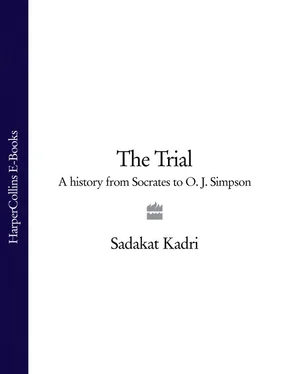
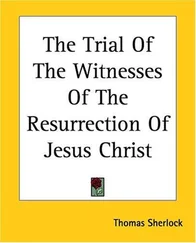
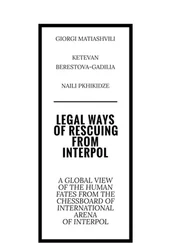

![Theresa Cheung - The Dream Dictionary from A to Z [Revised edition] - The Ultimate A–Z to Interpret the Secrets of Your Dreams](/books/692092/theresa-cheung-the-dream-dictionary-from-a-to-z-r-thumb.webp)
